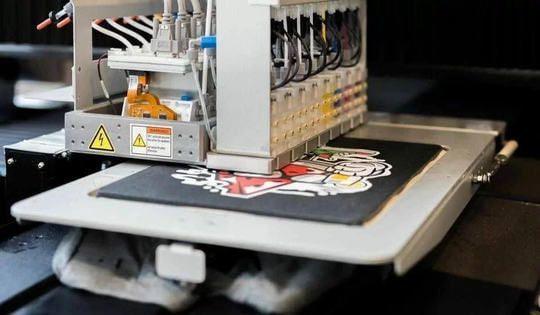
Printing Techniques for Textiles
Share
Learn about the MAIN PRINTING TECHNIQUES on textile garments
Have you ever wondered how designs are printed on T-shirts, sweatshirts or caps? There are several printing techniques that give life to those garments you wear with pride. Each method has its advantages, depending on the type of garment and the finish you want. In this article, we will explain clearly and simply what the main techniques are and how they work.
1. SCREEN PRINTING - The most traditional and durable technique
Screen printing is one of the oldest techniques used in the textile industry. It consists of transferring the ink through a mesh stretched over a frame, allowing the color to pass only in the areas of the design. It is ideal for:
- Large production volumes.
- Solid color designs.
- Cotton and polyester garments.

Main advantage: Durability and resistance to washing.
Disadvantage: Not optimal for complex designs or photographs.
2. SUBLIMATION - Perfect for polyester and vibrant colors.
Sublimation uses heat to transfer special inks to the fabric, embedding the design directly into the garment's fibers. It works only on synthetic materials such as polyester. It is ideal for:
- Designs with bright and gradient colors.
- Sports shirts and uniforms.
- White or light colored garments.
Main advantage: Designs will not fade or crack.
Disadvantage: Cannot be applied on cotton or dark garments.
3. DTG Digital Printing - Maximum precision for complex designs
The digital printing technique (Direct To Garment) uses special printers to apply the design directly on the garment, as if it were paper. It is perfect for:
- Detailed designs or designs with photographs.
- Small or customized productions.
- Cotton garments.

Main advantage: High quality printing in details.
Disadvantage: Less durability than screen printing.
4. EMBROIDERY - Elegance and resistance.
Unlike the previous ones, embroidery uses threads to “stitch” the design on the garment. Although it is more expensive, it offers a premium and professional finish. It is ideal for:
- Corporate logos.
- Formal garments such as polo shirts and jackets.
- Minimalist designs.

Main advantage: High strength and a sophisticated finish.
Disadvantage: Limited in complex details and expensive for large productions.
Which printing technique is best for you?
The choice of technique depends on the type of garment, the number of colors and the finish you are looking for. If you want something durable, screen printing or embroidery is ideal. For vibrant colors, sublimation is your best option.
Was this article helpful? If you want to know more about printing tecniques, follow us to find out more!
----------------------------------------------------------------
Ready to take your style to the next level? At DRIISMA we use the best printing techniques to offer you unique garments, full of color and with the highest quality. Explore our store and find your new favorite t-shirt, visit us now at DRIISMA.com!
